Excerpts from Jim Conrad's
Naturalist Newsletter
from the December 17, 2017 Newsletter issued from Rancho Regenesis in the woods ±4kms west of Ek Balam Ruins; elevation ~40m (~130 ft), N20.876°, W88.170°; north-central Yucatán, MÉXICO
CIONOSICYOS VINE
Along the highway about 4kms north of Temozón, at the wood's edge a vine had climbed about 3m (10ft) into the trees and was blossoming. From the road, I thought it was a pale-flowered passionflower vine because of its large, deeply three-lobed leaves, and that was something I'd not seen. However, up closer some of the leaves turned out to be five-lobed, and closer still it became clear that the flower wasn't at all passionflower-like. Below, you can see flowers and leaves:
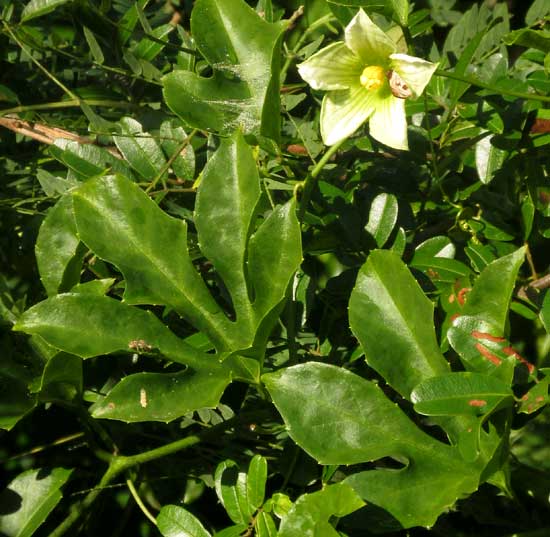
That kind of large, yellow, bumpy-surfaced item is seen inside flowers of members of the Melon or Cucumber Family, the Cucurbitaceae, and that's what I had. The yellow item is shown close-up below:
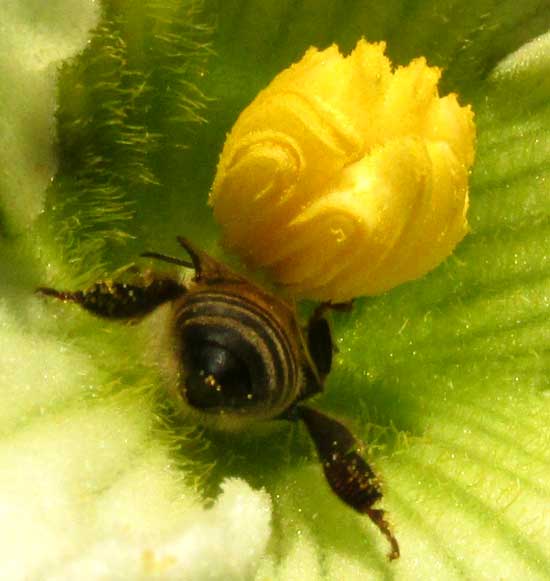
The yellow thing is the flower's collection of fused anthers, anthers being the pollen-producing parts of stamens, so they're male sexual parts. The blossom shows no trace of female parts, which is to be expected, since species in the Melon or Cucumber Family all produce unisexual flowers. Of course this blossom will never result in a fruit, since only female flowers do that.
I looked around for female flowers but couldn't find any. However, on another vine I found the gourd-like fruit shown beflow:
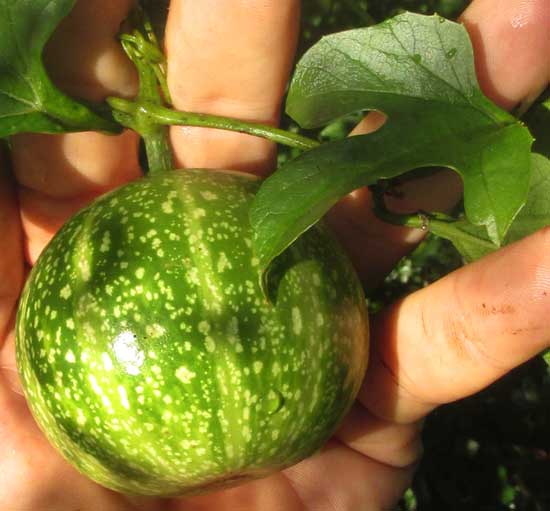
I had assumed that the green fruit was immature and later would turn a brighter color, but later I began finding green fruits fallen onto the forest floor as if that's their mature color.
This vine is CIONOSICYOS EXCISUS, with no commonly used English name. It's native to the Yucatan Peninsula and Chiapas in southern Mexico, as well as Guatemala and Cuba. There's little information about it, though in the paper "Ethnobotany of the Wild Mexican Cucurbitaceae," published in 2002 by Rafael Lira and Javier Caballero in Economic Botany 56(4), I read that in some places in the Yucatan the fruit is regarded as toxic, while in other places it's thought of as bird feed.
from the January 21, 2018 Newsletter issued from Rancho Regenesis in the woods ±4kms west of Ek Balam Ruins; elevation ~40m (~130 ft), N20.876°, W88.170°; north-central Yucatán, MÉXICO
VINE WITH IMMATURE FEMALE FLOWERS
This week I came upon some females that weren't open yet. Of course I'd like to find some open ones, but it's hard. The immature flower, though, is interesting to see, its spherical inferior ovary fuzzily residing below slender, flaring sepals, as shown below:
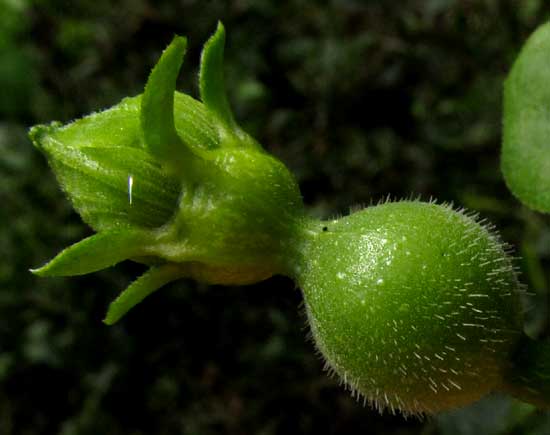
Leaves on this vine are variably shaped. Earlier we saw them deeply 3- and 5-lobed. This week's vine bore those, but also unlobed ones, as seen below:
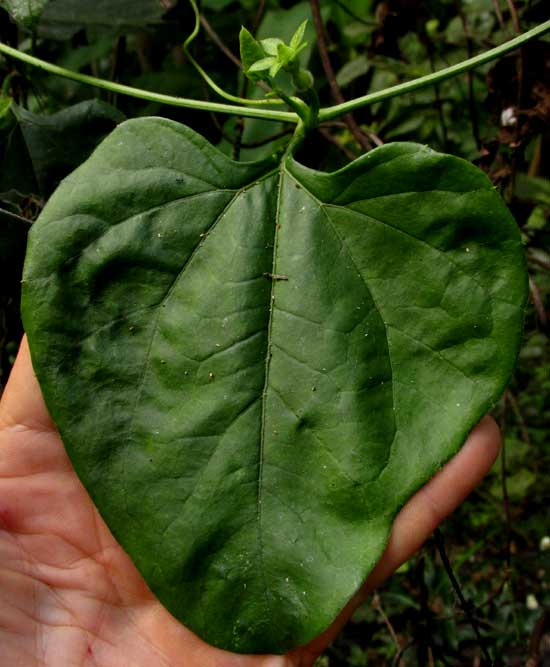
In that picture, notice the unopened female flower at the top.
from the February 4, 2018 Newsletter issued from Rancho Regenesis in the woods ±4kms west of Ek Balam Ruins; elevation ~40m (~130 ft), N20.876°, W88.170°; north-central Yucatán, MÉXICO
CIONOSICYOS VINE'S FRUITS TURNING BRIGHT ORANGE
Full-sized, green Cionosicyos excisus fruits have dangled from the vines for so long -- several weeks -- that I began thinking they must stay green until maturity. However, suddenly, all over the place, they're turning orange, as shown below:
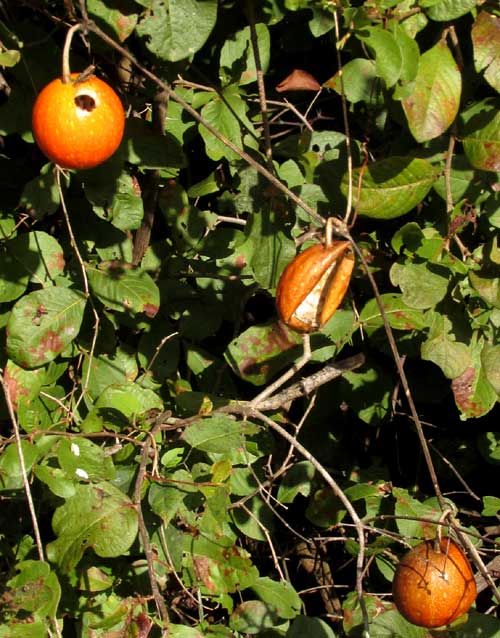
There you can see that once they're orange animals notice them and open them to eat the pulpy contents. Both the middle and lower fruits are reduced to empty, leathery, drying-out husks, and the top fruit bears a hole, which I'm guessing was made by a Golden-fronted Woodpecker, the species that destroys most of our citrus crop. The bird flies up to the fruit, pecks a hole, feeds briefly, and later attacks another fruit. Our Yucatan Jays and Altamira Orioles also might be responsible, but they're not as common as the woodpeckers. In the picture, atop a leaf about a foot below the top fruit, notice the white objects. Those are pulp-encased seeds left by the sloppily feeding fruit desecrater.
And, of course, that's exactly what the fruit "wants" -- to have its seeds disseminated.